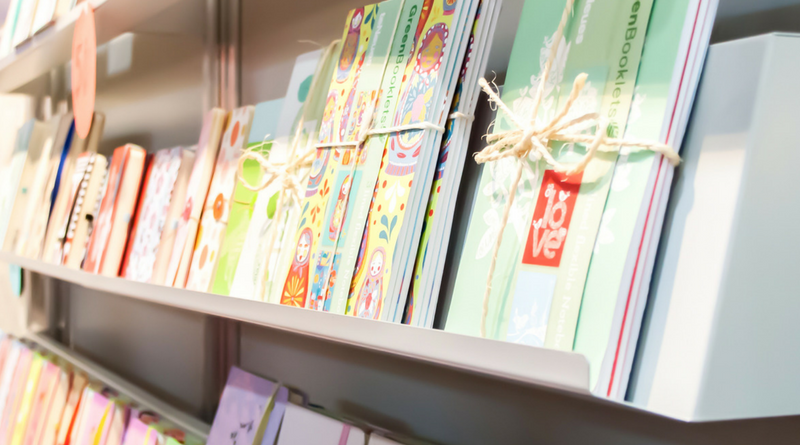Creating Knitting Patterns, Day 15: Knitting Pattern Publishing
Welcome to Day 15 of the Complete Guide to Creating Knitting Patterns series! Today, we are going to talk about knitting pattern publishing.
Distribution Channels for Knitting Pattern Publishing
If you’d like to sell your own knitting patterns online, there are many options open to you. It can be intimidating, especially if you’re just starting out, to figure out which place is the best fit for you. This post puts together an overview of some of the major knitting pattern publishing options, with the main positive and negative aspects of each.
Etsy: An Online Craft Marketplace With a Hell of a User Base
Online craft marketplaces like Etsy were primarily designed for people to sell handmade goods, but you can sell patterns through them, too.
Etsy supports the direct download of digital items. Knitting pattern PDF files are digital goods, too: you’re selling knitting pattern PDFs, no finished – physical – items. In some cases this can turn into a disadvantage for pattern sellers: no matter how clearly you phrase your title and description, you’ll still keep receiving orders from people who do not read them at all (and buy a pattern thinking they are going to receive a handmade sweater .. for $5 – hello?!).
Pros:
- Opening a shop is simple and straightforward
- Creating listings and uploading pictures is easy
- The website is pretty, so will be your shop (if your pattern photography is good, at least)
- Etsy is very popular, so you have access to a lot of traffic instantly and don’t have to build your own follower base first
- No setup fees – you only pay for each item you list once
- Automatic re-listing for pattern sales is possible
Cons:
- There’s a fee to list each item (currently $0.20) whether it sells or not
- Listings expires after 4 months and you have to pay to relist it
- Percentage fee on every sale
- There’s lots of competition, so it can be difficult to stand out
- Your potential customer needs to create an Etsy account first in order to purchase from you
- Advertising is possible but expensive and not very effective
Ravelry: The Gold Standard For Knitting Pattern Publishing*
When it comes to selling, Ravelry is a platform for knitting and crochet patterns only. It gives you access to over 4 million Ravelry users, plus anyone else you bring in from your blog, social media, etc. It has a very reasonable sliding scale monthly fee structure – and it’s free if your revenue is less than $30 per month. Customers don’t need a Ravelry account to be able to buy from you and the Ravelry cart can be integrated into your own website if you happen to have one.
*I’m biased, I know. I love Ravelry and the folks that run this website. They are part of the community, very helpful and the website and its user base are just plain gorgeous.
Pros:
- Huge user base (over 4 million people and counting!)
- Focused on knitting and crochet patterns
- Part of the community
- Reasonable pricing structures
- Advertising is affordable and effective
- Easy to setup and use
- Low maintenance
Cons:
- I can’t see any. You?
Craftsy: The Convenient Education Platform With a Pattern Store
The basic idea of Craftsy was “to create a convenient education platform that captured the magic of a live classroom, including interaction with an expert instructor and fellow students.” It’s primarily a learning platform. Craftsy provides a marketplace for patterns, too, taking percentage fees on every sale – the system is very similar to Ravelry, just without the knitting and crochet community in the background.
Pros:
- Low maintenance
- Easy to setup and use
Cons:
- No community like Etsy or Ravelry
- Primarily no pattern publishing platform
- Personally, I’d rather support the awesome and helpful folks at Ravelry – but that’s my personal view only!
Publishing (and Selling) on Your Own Website
If you happen to have your own website, it might be an option for you to publish and sell your knitting patterns there, too. If you want an easy to use and free solution, use WordPress* (WP) and the WooCommerce (WC) plugin. (That’s how I do it.) Setting up your own website might be intimidating at first, but with WP and WC it’s straightforward and free (free only if you choose a free hosting platform, but that’s such a broad topic it would fill post of its own).
*WordPress.com is a blogging platform. If you want to host your own installation of WP you have to point your browser to WordPress.org.
Pros:
- Full control over everything
- Relatively easy to setup and maintenance, at least with WP & WC
- Good for your reputation
- You can combine your blogging and publishing activities in one place
- No percentage fees, no listing costs
Cons:
- Can be intimidating if you haven’t set up a blog or website before (but there’s lots of tutorials out there – give it a try!)
Which Platforms Does Julia Use?
Personally, I’m using Ravelry and my own website (running self-hosted WordPress + WooCommerce) for selling and publishing my knitting patterns. I’m still struggling with the fine tuning of WooCommerce’s shop appearance settings, but it’s the best solution I came across so far. I can only recommend using it!
Based on all the information above, choosing a platform for knitting pattern publication should be easy for you now.


Hi, thanks for a great series.
Are you going to release day16? As I would be very interested in knowing the further reading.
Eventually later this year. Thanks!
Fantastic, many thanks Julia.
Pingback: From Idea to Published Knitting Pattern in Six Easy Steps - knitting.today
Does Ravelry assist with collecting sales tax?
Yes it does.